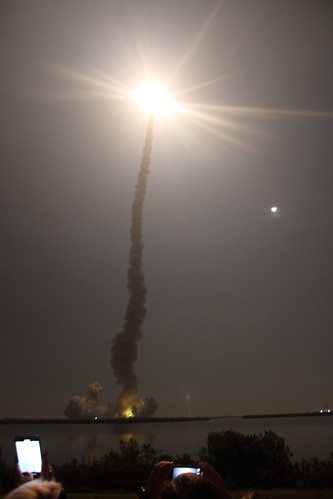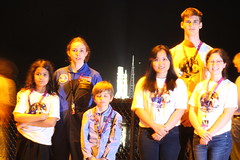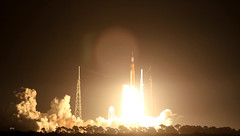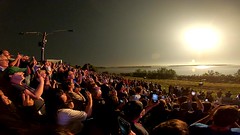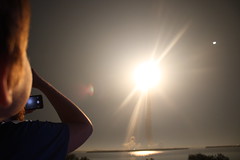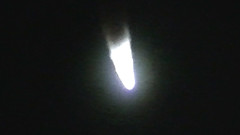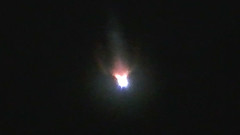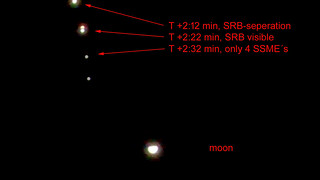| NASA Moonbuggy Race - Presse |
TV-Reports Foto-Archiv Blog (is in process)
Die Rovernauts aus Leipzig sind seit dem 30.5.2023 nun auch bekannt aus der Sendung "Außenseiter-Spitzenreiter"
 Die Rovernauts (ehemals Team Germany mit 17-jähriger Geschichte und 7 Podestplätzen, davon 3 Weltmeistertitel) sind zurück auf dem Rennkurs in Huntsville Alabama. Nach 5 Jahren Pandemie, Reisbeschränkungen und dem damit verbundenen „Wieder-Hochfahren“ der komplexen Logistik, trat unser Team mit nur 3,5 Mitgliedern vom 18.-20. April 2024 wieder an. Auf dem letzten Wettbewerb zum 50. Jubiläum von Apollo 11 im Jahre 2019, kamen die Rovernauts als bestes Team mit einem 1. Platz, also dem Weltmeistertitel nach Hause.
Die Rovernauts (ehemals Team Germany mit 17-jähriger Geschichte und 7 Podestplätzen, davon 3 Weltmeistertitel) sind zurück auf dem Rennkurs in Huntsville Alabama. Nach 5 Jahren Pandemie, Reisbeschränkungen und dem damit verbundenen „Wieder-Hochfahren“ der komplexen Logistik, trat unser Team mit nur 3,5 Mitgliedern vom 18.-20. April 2024 wieder an. Auf dem letzten Wettbewerb zum 50. Jubiläum von Apollo 11 im Jahre 2019, kamen die Rovernauts als bestes Team mit einem 1. Platz, also dem Weltmeistertitel nach Hause.
Die damalige Pilotin Firine fuhr den Rover im Alter von 14 Jahren und besuchte ein Jahr zuvor das US-Space Camp, den SpaceX Start des Teleskopes TESS und mit ihrem Team die Embry Riddle University in Daytona, Florida. Heute ist Firine Bugenhagen 19 Jahre alt, studiert im 6. Semester Luft- und Raumfahrt an der TU-Delft und wird ab August dieses Jahres an die Embry Riddle University delegiert. Das ist dann bereits unsere 3. Studentin an dieser Eliteschule, aus der Astronauten und Raumfahrtingenieure hervorgehen. Wie man damit sieht, sind unsere Mitgliedschaft, die Ausbildung und Wettbewerbe nachhaltig und eine gute Vorbereitung für jene die weiterwollen. Das ist auch kein Wunder, denn wir wenden die Empfehlungen vom Prof. Dr. Jesco von Puttkamer an.
Ungeplant kam die Pandemie mit dem Reisebann und der Krieg Russlands gegen friedliebende Menschen und die freie Welt dazwischen. Das mühsam aufgebaute immer überlegene multinationale Netz der Brücken zwischen den Nationen und Generationen hängt seitdem auf einer Seite empfindlich in der Luft. Nur schrittweise wird dieses Loch mit Asien, seinen Partnern, seinen Kontakten und Schülern ausgefüllt. Aber auch der Verlust der beständigen gemeinsamen Zusammenarbeit vor Ort führte zu einem Loch der Nachfolgegeneration bei unseren jüngeren Mitgliedern. Virtuelle Unterrichtseinheiten können Praxis, Hands-On und Face-To-Face nicht ersetzen.
Die Rovernauts hatten es also während der Pandemie überhaupt nicht leicht. Es wurde mit Mindestbesetzung CAD gelernt, 3D-Druck und die Werkstatt ausgebaut, also das Feuer brennen gelassen. Aber zu einem Mitgliederzuwachs unter der jungen Generation führte das wegen des komplexer gewordenen Schulalltages nicht. Das Sommercamp 2023 war zwar intensiv und es kamen auch einige Schüler aus der Ferne, aber schnell wurde klar, dass das Homeschooling den Nachwuchs von der Praxis entfremdete. Es wurde absehbar, dass sich kein Team für die Konstruktionsanforderungen eins Rovers bilden konnte. Ersatzweise wurde dann 3D-Druck, Modellbau und die Erweiterung der Werkstatt mit Holzbau vermittelt. Das schuf dann eine gute logistische Basis, aber die Gruppe zerstreute sich im ausgehenden Sommer wegen der Entfernungen innerhalb Deutschlands wieder.
Erst auf den letzten Pfiff und mit einem Aufruf in Presse und TV gelang es der Teamleiterin Cosma Heckel (heute 17 und zum letzten Rennen nur 12 Jahre jung) noch ein Team mit 2 weiteren Teilnehmern ihrer Berufsschule zusammen zu schweißen. Das passierte erst im Januar 2024, also bereits 6 Monate nachdem andere Teams bereits mit schriftlichen Arbeiten Punkte bei NASA sammelten und fleißig konstruierten.
Wegen der beständig fortgeführten Weiterentwicklung zur Pandemie konnte das neue Team Rovernauts 2024 in den Winterferien schnell an Fahrt aufnehmen. Unterstützend standen schnell wieder die Unternehmen Dreherei Günter Jakob, Metallverarbeitung HOLL, Sattlerei Kübler, Sandstrahlerei Doerffer und die Firma Althaus Galvanik und Pulverbeschichtungen dahinter.
Vor allem aber gewann das Team schnell Aufwind durch die Unterstützung der Handwerkskammer zu Leipzig und deren Einladung zur Mitteldeutschen Handwerksmesse Leipzig. Hier konnten Besucher begeistert und weitere Mitglieder der jüngeren Generation gewonnen werden. Eine richtige CAD- und Produktionsstraße wurde vor den 50.000 staunenden Messebesuchern betrieben und es konnte mitgemacht und mitgefahren werden.
Binnen 10 Wochen konnte im Rekordtempo ein komplett neuer Rover in der seit Sommer 2923 neuen Werkstatt geschaffen werden. Hier half der immense 17-jährige Erfahrungsschatz des Vereines mit 45 gebauten und modifizierten Fahrzeugen genauso wie der erstarkende Erfolgswille des Teams. 2 Ferien gingen komplett drauf.
Obwohl das Team bei den schriftlichen Vorbewertungen noch gar nicht mitmachen konnte, entschied man sich für die Fahrt zum Wettbewerb trotz des damit schlechten Scores von 35%. Am Tag der Raumfahrt, also dem 12. April 2024, ging es dann in den Flieger und ein Abenteuer mit 18.000 Flug- und 5.000 Fahr-Kilometern begann. Alle Ereignisse hielten die Teammitglieder in Berichten, Reels und mit Videos fest. Eine Linkliste gibt es oben und unten. Hier sind die Fakten:
Die Teammitglieder
Cosma Heckel (17), betreut durch die Jesco von Puttkamer Schule seit 12 Jahren Pilotin, DuBAS-Lehrling, Industriemechanikerin, Karl-Heine-Schule, ZAW, 1st-Mould Pirna, Ausbildungsbotschafterin der Handwerkskammer zu Leipzig, Mitglied im Jugendparlament Leipzig, Mitglied im Youth Council des US-Generalkonsulates, erfahren in CAD und Technik
Frederik Fichtner (17), betreut durch die Jesco von Puttkamer Schule seit 3 Monaten Co-Pilot, Multitool-Bediener, Fachabiturient, Karl-Heine-Schule
Heidi Claus (18), betreut durch die Jesco von Puttkamer Schule seit 3 Monaten Fachabiturient, Karl-Heine-Schule, Technikerin, Trainerin
Jesco Heckel (10), betreut durch die Jesco von Puttkamer Schule seit 6 Jahren, Grundschüler, 74. Grundschule - dann Gymnasium an der Quartiersschule Ihmelstraße, Techniker, Kameramann, erfahren in CAD und Technik mit Betreuung durch eine Tesla-Ingenieurin
Weiblicher Rover namens OPHELIA
Das Team taufte den Rover direkt vor der Inspektion auf den Namen OPHELIA. Dieser Name lehnt sich an den größten Mond im Uranus-System an. Es ist der erste weibliche Rover. Uranus ist durch seine Neigung von fast 90° der Querschläger im Sonnensystem, wie das Team Rovernauts. Seine Monde sind temporäre Teamspieler, die sich regelmäßig aufreiben und in einem Ringsystem enden, um sich dann wieder neu zu formieren und in einem neuen Team als Monde in neuen Bahnen spielen. Opelia wird in diesem Jahr 3 weitere Schwestern bekommen, welche bereits auf Kiel gelegt sind und im Sommercamp internationalen 2 Schülern und Studenten auf die Bahn helfen sollen.
Technische Daten des Rovers
- Fahrmodus: Länge, Breite, Höhe: 2,20 x 1,29 x 1,00 m
- Faltmodus: Länge, Breite, Höhe: 1,00 x 1,29 x 1,29 m
- Gewicht: 85 kg mit nonpneumatischen Rädern und Multitool, 65 kg mit Fahrrad-Rädern
- Gänge 2 x 14 (2 x Rohloff Speedhub + 1 x Differenzial)
- 2 Personen hintereinander sitzend mit 38 cm Bodenfreiheit zum Körper
- 3 m Sicherheits-Knautschzone durch Faltmechanik
- 210 mm Hydraulik-Scheibenbremse vorn mit Feststellbremse
- gemessene Maximalgeschwindigkeit: 80 km/h
- Odometer, Stoppuhr, 4 Bordcams, 1 Multitool, 12 Liter Druckluftanlage 6,5 bar
Änderungen seit 2019
- komplette Überarbeitung des Fahrwerks vorn und hinten für S-Ply-Blattfedern
- Aluminiumrohr-Sitze mit Rollgurt
- Feststellbremse für Lenkung
- neues Differenzialgetriebe mit Aufhängung
- Kardanwellen aus Karbonfaser-Rohr
- 19-Segmente in den Rädern mit gummiertem Glasfasergewebe und wassergestrahltem Gummiprofil
Ergebnisse der Rovernauts unter 70 Teams
- 1. Platz im Rennen mit 100% Punkten und 3:35m (schnellstes Team ohne Fehler)
- 4. Platz in der Gesamtwertung mit 137 Punkten (wegen der fehlenden Punkte im Vorfeld)
- Most Improved Award (beste Verbesserung zwischen beiden Rennen, Jacobs Industries, 500 US$)
- bestes internationales Team (Preis des ZAW Leipzig, 500€)
- Europameister (Preis der Handwerkskammer zu Leipzig, dotiert mit 600€)
Rovernauts das Team der Herzen
- kleinste Mitgliederzahlt 3,5 (Jesco außer Wertung, weil noch keine 14, aber vollintegriert)
- einziges Team mit Mädchen als Pilot erfolgreich auf dem Kurs
- einziges Team welches nach dem gewerteten Rennen keine technischen Schäden hatte
- Pilotin Cosma startete trotz Schnittverletzung
- 19 Punkte hat sich das Team durch Foto-/Video-Beweislage vor der Jury erkämpft
- Team mit dem meisten Applaus auf der Award Zeremonie
Wie lief das Rennen?
Die Rovernauts waren phänomenal und legten die beste Perfomance hin. Es gibt 2 Durchgänge. Der beste Durchgang wird gewertet. Am 1. Tag brach eine Schweißnaht am Beifahrersitz. Cosma verletzte sich an der rechten Hand, trotz Handschuhe. Dennoch konnten Cosma und Frederik sich für das 2. Rennen qualifizieren, erledigten alle Aufgaben im Kurs und erreichten das Ziel in weniger als 8 Minuten.
Das 2. Rennen war ein Gänsehaut-Event. Die beiden durchfuhren den schweren Kurs absolut souverän und perfekt, ohne Fehler und sammelten bei den Aufgaben alle Punkte. Sie trafen mit einem Zeitvorsprung von 3 Minuten! Im Ziel ein. Kein Team war schneller. Teams mit Null Fehlern und 100% Punkten waren 3 Minuten langsamer. Alle Teams und alle Rennställe waren fassungslos und interessierten sich ab diesem Moment für den Rover „Ophelia“ und die beiden Piloten.
Zur Belohnung ging es auf NASA-Tour und zum Starship von SpaceX
Die anstrengende Woche in Huntsville Alabama wurde mit einer besonderen Exkursion belohnt. Es ging per Auto nach Houston in das Johnson Space Center und anschließend direkt zur SpaceX-Starbase nach Boca Chica. Hier konnte das Starship vom Team und der Rover von den SpaceX-Fans bestaunt werden. Es gab eine Testfahrt über die Starbase am Mechazilla vorbei. Natürlich wurde das Hopper-Haus besucht und ein Termin mit der Stadt South Padre gemacht. Danach ging es wieder zurück, über New Orleans mit dem NASA-Center Michoud Assembly Facility und nach Mississippi zum Stennis Space Center. Nach 5000 km und 5 Tagen mit nächtlichen Fahrten wurde dann der Heimflug angetreten.
Blog | Fotogallery | Videochannel | Instagram | Facebook
Arthur trägt in Schulen, Universitäten, auf Konferenzen, Symposien und auch in einer Kadettenanstalt der indischen Armee von seinen Erlebnissen mit uns und NASA vor. Das Hauptaugenmerk liegt auf der Zukunft im Weltraum, Berufen und Karrieremöglichkeiten. Diese trägt er zusammen mit seinen eigenen Erlebnissen vom Start der NASA-Mondrakete ARTEMIS 1 vor. Dabei erklärt er an einem selbstgebauten Modell (1:87) der SLS-Mondrakete die einzelnen Phasen eines Starts und Fluges zum Mond. Das junge und auch reife Publikum ist stets begeistert. Ein Überblick in Fotos. Bei vielen Auftritten bekommt er Unterstützung durch die 16-jährige Cosma Heckel, welche dann per Vi deokonferenz zugeschaltet wird.
Arthur unterstützt als Boteschafter der NASA-Artemis-Generation damit die Anstrengungen der Behörde für mehr Wissenschaft unter der Jugend unter dem Namen "STEM-Engagement". Die Welttournee als soziales Jahr für Schüler mit Schulabschluss steht Mitgliedern des International Space Education Institute zum Sammeln von globalen Lebenserfahrungen zur Verfügung. Es werden damit nicht nur unvergessene Erlebnisse für das Leben geschaffen, sondern vor allem Brücken über vermeintliche Grenzen gebaut und anderen Schülerinnen und Schülern eine verbindende Berufsvision für die Zukunft gegeben. Arthur Sommer vom International Space Education Institute, Deutschland, hat Indri erreicht Indri, 7. November (Niš)ÂÂ Die Weltraumwissenschaft ist ein wunderbares Feld voller Möglichkeiten. Es enthält das Leben vieler Astronauten und ihre Geschichten über den Weltraumflug, von Misserfolgen bis hin zu Erfolgen. Diese Worte wurden von Navdeep Singh, Präsident des WorldSpace Council, und Arthur Sommer, Mitglied des International Space Education Institute, Deutschland, gesagt. Er sprach als Hauptredner in einem Vortrag zum Thema Chancen in der Weltraumwissenschaft unter der gemeinsamen Schirmherrschaft der Employment Cell, der Physikabteilung und der Chemieabteilung am Shaheed Udham Singh Government College im Dorf Matak Majri. BILD: Sie unterrichten Schüler über Weltraumraketen: Navdeep Singh und Arthur Sommer mit Schülern und Lehrern am Shaheed Udham Singh Government College im Dorf Matak Majri in Indri. Neben der Erläuterung der Herstellungsmethoden wurde auch erklärt, wie man die NASA erreichen kann. College-Rektor Dr. Vikas Attri begrüßte die Gäste und forderte die Studenten auf, sich von solchen Persönlichkeiten inspirieren zu lassen. Dr. Suresh Kumar, verantwortlich für Placement Cell, koordinierte das Programm und leitete die Bühne. Dr. Deepa Sharma hat es geschafft. Der aus Deutschland stammende Arthur Sommer teilte seine NASA-Erfahrungen mit den Studierenden. Er erläuterte Einzelheiten zum Aufbau der Mondrakete ARTEMIS und erläuterte die Herstellungsmethode der Rakete. Dr. Bohti Dhanda, Dr. Gulab, Dr. Raj Kumar und Dr. Sumit Goyal waren bei der Organisation des Programms anwesend.
Cosma erhält auf Pressegerspäch die Akkreditierung zur Ausbildungsbotschafterin!
(Leipzig 1933, NASA 1962-2012) Herzlichen Glückwunsch zum Geburtstag Prof. Dr. Jesco von Puttkamer
aktuell: 18.9.2022, Leipzig /Huntsville AL /Alexandria VA, International Space Education Institute e.V.
Nach einem Telegramm aus Amerika: "Gehen sie nicht in die Wirtschaft, kommen Sie nach Huntsville, wir fliegen zum Mond, Stop", wanderte der junge Ingenieur aus und arbeite am Apollo-Programm mit. Sein Aufgabenbereich umfasste die Gravitationsanomalien des Mondes und Studien an der Wiederverwendbarkeit von Stufen der Saturn V. Aus dieser Wiederverwendbarkeit ging die Space-Shuttle-Flotte hervor. Sein Engagement für das COTS-Programm (Commercial Orbital Transportation Systems) kommt mit SpaceX und anderen Mitbewerbern in diesem Jahrzehnt eindrucksvoll zum Tragen. Den Stift als Autor legte er nie beiseite, so verfasste von Puttkamer seit den 1970er Jahren als Leiter der Abteilung für strategische Planungen unzählige Sach- und Fachbücher über die Raumfahrt. Er blieb auch der Science-Fiction treu, beriet Gene Roddenberry und Star Trek als NASA-Beauftragter und verpflichtete die Afroamerikanerin Nichelle Nichols (bekannt als Lt. Uhura) als Botschafterin für NASA-Nachwuchs der 1970er Jahre. Die slawischen Wurzeln seiner Familie erlaubten im eine versöhnliche Mentalität mit den Wissenschaftlern der damaligen Sowjetunion im Programm Apollo-Sojus, welches auch Dank von Puttkamers als Triebfeder nach der Perestroika in verschiedenen MIR-Missionen mit Space-Shuttle-Flügen und letztendlich im Bau der Internationalen Raumstation ISS mündete. Von Puttkamer bekleidete von 1998 bis zu seinem Tode 2012 das Amt des NASA-Direktors für die ISS im Washingtoner Hauptquartier. Die ISS ist trotz des russischen Angriffskrieges bis heute ein multinationaler Friedensbotschafter der Menschheit im All und ein Garant für wissenschaftliche Zusammenarbeit. Verschiedene Ehrendoktorwürden und Ehrenprofessuren erhielt der Ingenieur für seine unermüdliche international Arbeit mit Studenten, welche heute bereits mehrere Generationen von Raumfahrtwissenschaftlern umfassen. Im Jahre 2005 entschied sich Prof. Dr. von Puttkamer eine Schule zur frühen Nachwuchsförderung für Raumfahrtingenieurwesen zusammen mit Leipziger Bürgern als Förderverein zu gründen. Als persönliche Aspiranten für diese Aufbauarbeit wählte er zur Jahrtausendwende das damals junge Leipziger Ehepaar Yvonne und Ralf Heckel aus. Diese Schule hat bis heute beeindruckende Ergebnisse erzielt und zahlreiche internationale Raumfahrtwissenschaftler, Ingenieure und auch angehende Astronautinnen hervorgebracht. Heute trägt die Schule seinen Namen und umfasst einen kleinen Klima- und Wissenschafts-Campus von 2000 m² im Osten von Leipzig, unweit seines Geburtshauses.
Puttkamer war ein Visionär, der die Zukunft als Körper vor sich sah und verständlich erklären konnte. Jeder seiner Vorträge zwischen Moskau und Kalifornien war ein Erlebnis. Es ist so, als würde diese von ihm gebaute Zukunft in diesen Wochen tief verneigen, denn: 1. Auf dem Dachboden seines ehemaligen Wohnhauses in Huntsville wurden kürzlich wertvolle Handzeichnungen und Manuskripte in Plakatformat aus der Apollo-Zeit gefunden - sie werden zum Geburtstag in Leipzig gezeigt. 2. Die ISS zeigt sich am Abend seines Geburtstages über der Geburtsstadt Leipzig um 20 Uhr auf 90 Grad über Leipzig mit -4,2 Mag besonders hell und nah. 3. Der Asteriod 266752 Vonputtkamer steht derzeit in einer bislang nie dagewesenen Opposition zur Erde und konnte trotz seiner geringen Größe und Lichtschwäche von -20 Mag von der institutseigenen selbstgebauten Sternwarte vor 7 Tagen tatsächlich in einer Entfernung von 150 Mio km (Entfernung Erde-Sonne) fotografiert werden. Er ist derzeit westlich neben dem Jupiter zwischen Widder und Fische zu finden (die Fotos werden am 22.9.23 zum Geburtstag präsentiert). 4. Die Rückkehr zum Mond besiegelten NASA und DLR in der vergangenen Woche mit dem Beitritt zum Artemis Programm. 5. Die ersten europäischen Nachwuchstalente die einen Artemis-Start als VIP-Besucher begleiten durften, stammen aus Leipzig. Es sind 3 SchülerInnen im Alter zwischen 8-18 Jahren. 7. Die Leitung der Jesco von Puttkamer Schule begleitete bereits den Erststart des Starships am 20. April 2023 und öffnet nun Bildungsreisen zu folgenden Starts. 8. Überall in der Welt sind ehemalige "Puttkamer-Schüler" an Raumfahrtmissionen und Mondmissionen beteiligt. Das reicht von Indien über Leipzig bis Kalifornien. Seit 2018 besitzt die Jesco von Puttkamer Schule auch eine Dependance in Indien. Eine Delegation aus Indien ist derzeit in Leipzig zu Besuch. Prof. Dr. Jesco von Puttkamer war über 50 Jahre lang das NASA-Gesicht im deutschen TV. Seine "Kinder" beherrschen nun die sozialen Medien mit Bildungspartnern in über 30 Ländern und treiben damit unsere Zukunft weiter voran. Er selbst war nie im All, bezeichnete sich aber als „Schreibtisch-Astronaut“ und beschrieb in seinem letzten Buch das „Jahrtausendprojekt Mars“ und der Landung des Menschen darauf. Heute erinnern an ihn je eine Gedenktafel am Leipziger Geburtshaus und dem Wohnhaus in Huntsville Alabama. Vor allem aber lebt im steten Raumfahrt-Nachwuchs aus der Leipziger Schule mit seinem Namen sein Lebenswerk fort. Für diesen 90. Geburtstag wurde in diesem Jahr beträchtlich in die Schule investiert in Hauptgebäude, Außenbereich und Werkstätten. Machen Sie sich selbst ein Bild. Interessenten an Vorträgen, Gesprächen, Erinnerungen und vor allem der Zukunft sind herzlich willkommen. Das Programm am 22.9.2023: Das Programm danach:
Ansprechpartner: Anmeldung zur Geburtstagsfeier sind per WhatsApp erforderlich. Der Eintritt ist frei, aber es werden Geburtstagsgeschenke im Sinne des Professors erwartet nach dessen Worten: „Diese Jugend muss man tatkräftig unterstützen. Das ist unsere Bringschuld!“ Geburtstagsgeschenke bitte an das Spendenkonto: Diese E-Mail-Adresse ist gegen Spambots geschützt! JavaScript muss aktiviert werden, damit sie angezeigt werden kann. oder in folgenden Währungen in den nächsten Monaten und Jahren zur Fortsetzung des Lebenswerkes von Puttkamers: - Zeit – Engagement – Ideen – und auch Geld
Die hellste Nacht meines Lebens - der Start der Artemis 1 Fotos Cosmas Tagebuch Rovernauts Startberichte Raumfahrt Concret Werner-Heisenberg-Gymnasium
2 Busse in schwarz fahren auf. Es sind die VIP-Busse. Sie wurden extra für diesen Tag hergerichtet. Auf einem ist groß das Artemis-Logo zu sehen auf dem anderen ist die Rakete aufgedruckt. Wir sind die einzigen die sich heute vor diese Busse trauen und ausgiebig Fotos machen. Eines davon erscheint am Tag danach auf der Frontseite der Leipziger Volkszeitung. Ein besseres Teamfoto war im Dunkel dieser Nacht nicht zu machen. Ich habe viel versucht, sogar mit einem manuell gesteuerten mobilen Blitz aus dem Handgelenk, Langzeit-Serienbelichtung und etlichen Objektiven. Nichts ist scharf geworden, weil entweder jemand durch das Bild gelaufen ist oder Jesco gähnte. Schubweise rückt die Schlange in Richtung Busse. Inzwischen ist sie lang hinter uns und reicht über den Parkplatz. Wir bekommen den Bus 346 und nach einem ausgiebigen Durchzählen aller Insassen mit Meldung an die Zentrale geht es auch schon los durch die Nacht. Sehen kann man nichts da die Scheiben der Busse für die Tagestouren bei heller Sonne stark abgedunkelt sind. Dafür wird Innen das Licht angelassen.
Die SLS-Rakete steht hell bestrahlt am Horizont, ruhig und leicht dampfend. Sie ist bereits befüllt. Das ist ein gutes Zeichen. Nur noch 3% Wasserstoff fehlen. Wieder lodert die Flamme hinter dem Startturm und es werden damit die siedenden Gase in sicherer Entfernung abgefackelt. Im Gegensatz zum ersten Startversuch sind nun alle Besucher entspannt bei diesem Anblick. Ein Großbildschirm zeigt die Abläufe vor Ort und Moderatoren erklären was nun kommt. Live-Schaltungen zu allen Partnern von Houston bis Bremen zeigen die Größe des Projektes. 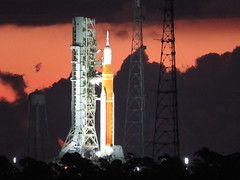  Dann der Schock, ein Leck! Das RED TEAM fährt mit 2 Autos direkt vor die dampfende und vollbetankte Rakete. Es steigen 3 Personen aus, 2 Ingenieure und ein Sicherheitsmann. Riesig erscheinen die Triebwerke und darunter laufen die drei nun in weißer Kleidung und mit Helm herum, klettern in den Startturm. Was würde ich darum geben nun auch dort zu sein, unter dem dampfenden und zischenden Monster welches zum Mond fliegen wird. Ein Funke und alles ist weg. Bis heute wusste ich nicht, dass in einem solchen Moment überhaupt Menschen so nah ran dürfen. Offensichtlich aber machen sie ihren Job gut. Dann befestigte Bolzen meldet wieder ein „GO“. Aufatmen. Dann der Schock, ein Leck! Das RED TEAM fährt mit 2 Autos direkt vor die dampfende und vollbetankte Rakete. Es steigen 3 Personen aus, 2 Ingenieure und ein Sicherheitsmann. Riesig erscheinen die Triebwerke und darunter laufen die drei nun in weißer Kleidung und mit Helm herum, klettern in den Startturm. Was würde ich darum geben nun auch dort zu sein, unter dem dampfenden und zischenden Monster welches zum Mond fliegen wird. Ein Funke und alles ist weg. Bis heute wusste ich nicht, dass in einem solchen Moment überhaupt Menschen so nah ran dürfen. Offensichtlich aber machen sie ihren Job gut. Dann befestigte Bolzen meldet wieder ein „GO“. Aufatmen.
Jedem hier wird nun bewusst, dass sie Zeitzeugen einer neuen Geschichte werden. Man wird sie später in ein Davor und ein Danach einteilen. Noch wissen viele nicht, was sich wirklich hinter diesem ersten Start verbirgt, welche Tests nun folgen und was sie in Zukunft beeinflussen. Dass diese Rakete einmal eine ganze Raumstation im Mondorbit zusammensetzen wird und damit das Gateway für ständige Basen auf dem Mond bildet, das wissen nur Eingeweihte hier. T -15 Sekunden, „Free for ELS“ Ab nun gibt es kein Zurück mehr! Eine Schockwelle lässt den Boden erzittern und das Wasser im Banana Creek rau werden. Mit einem großen Blitz schießen riesige gleißend weiße Flammen aus den beiden Boostern und geben sofort Schub. Mehrere Haltebolzen zwischen der Rakete und dem Startplatz reißen durch und die Rakete hebt ab. „We have a liftoff!“ CAM1 CAM2 CAM3 CAM4 CAM5 CAM6 CAM7 CAM8 CAM9 Noch aber ist ansonsten alles ruhig. Langsam hebt sich der Koloss vom Gewicht eines Schlachtschiffes mit 2800 Tonnen in die Höhe. Das ist ein Drittel des Gewichtes des Eifelturms. Das Licht wird immer heller und blendet. In großer Geschwindigkeit breiten sich weiße Wolken rechts und links am Boden aus. Hier verdampfen gerade über eine Millionen Liter Kühlwasser. Während die Rakete den Startturm verlässt, schwenken sie die Haupttriebwerke von ihm weg. Beim Verlassen des Turmes beginnt das Bahnmanöver. Von alledem ist aber nichts zu spüren. Die Zuschauer brüllen und schreien unablässig, einige halten ihre Handys vor das Gesicht, während die Rakete Geschwindigkeit aufnimmt. Sie blendet wie eine Sonne und andere halten sich die Hand schützend vor die Augen.
Inzwischen ist die Rakete schon sehr hoch. Sie erleuchtet das ganze Cape Canaveral taghell. Man muss die Augen zukneifen. Am Tag danach berichten mir Einwohner aus dem 30 km entfernten Cocoa, dass sie noch nie einen so hellen Start gesehen hätten. Noch nie hätten deren Fensterscheiben derart gewackelt.
Inzwischen scheint die Artemis von unserer Position aus die Gipfelhöhe erreicht zu haben. Sie hängt wie eine Lampe auf einem riesigen schlanken Ständer aus Rauch über der gesamten Region und erhellt sie. Selbst die feuchte Luft wird hell, heller als die schwarte Rauchsäule unter ihr. Das Licht aber wird fahl und wirft scharfe lange Schatten. Der Donner ebbt ab. Die Rakete ist nun nur noch ein flackernder kurzer Strich und schwenkt scheinbar im Bogen nach unten mit direktem Kurs auf den unter ihr verweilenden Halbmond. Dieser liegt auf dem Bauch und scheint sie wie eine oben offene Schale auffangen zu wollen.
Unsere Schüler können es immer noch nicht fassen. Sakurako hat die Hände im Gesicht und schaut durch die gespreizten Finger, als wolle sie noch eine Weile in der alten Zeit verharren. „Wow“ „Amazing“ „Wahnsinn“ sind die Worte die ich nun vermehrt höre. Die Beleuchtung wird wieder angeschaltet.
Dazu wird es auch einen neuen Nachwuchswettbewerb in Europa geben, der politisch unabhängiger, zukunftsorientierter und multinational ausgewogener ist, als alles was wir bisher kennenlernen und mitgestalten durften. Team Attempt 1-2 (September 2022): Team Launch: special thanks to: thanks to our sponsors: Weblinks: Press: This educational travel and excursion was managed by International Space Education Institute Leipzig/Germany. |































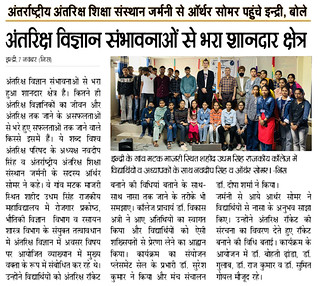





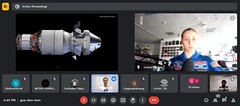
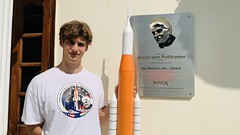
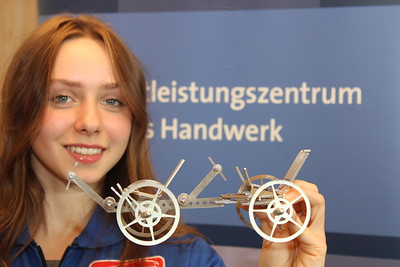

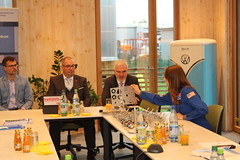
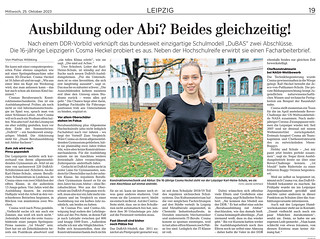







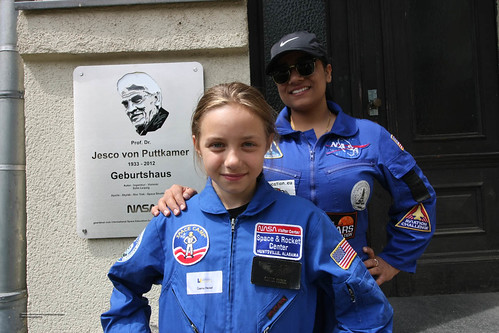
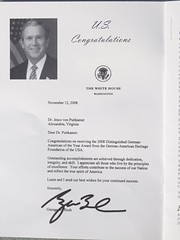
 Auszeichnungen erhielt von Puttkamer zahlreich. Genannt seien hier vor allem 2 herausragende Ehrungen. Im Jahre 2008 erhielt von Puttkamer den Titel "Distinguished German American" mit Gratulation vom 43. US-Präsidenten und der NASA. Im selben Jahr widmete das Jet Propulsion Laboratory im einen neu entdeckten Asteroiden zwischen Mars und Jupiter, den "266752 Vonputtkamer". Im Jahre 2007 öffnete von Puttkamer mit seiner Leipziger Schule internationalen Nachwuchsteams auf dem NASA-Moonbuggy-Race (später NASA Roverchallenge) erstmals die Tore für nicht US-Bürger an Nachwuchswettbewerben der NASA. Daraus erwuchsen bis heute über 100 Teams und bereits 3 Weltmeistertitel gingen nach Leipzig.
Auszeichnungen erhielt von Puttkamer zahlreich. Genannt seien hier vor allem 2 herausragende Ehrungen. Im Jahre 2008 erhielt von Puttkamer den Titel "Distinguished German American" mit Gratulation vom 43. US-Präsidenten und der NASA. Im selben Jahr widmete das Jet Propulsion Laboratory im einen neu entdeckten Asteroiden zwischen Mars und Jupiter, den "266752 Vonputtkamer". Im Jahre 2007 öffnete von Puttkamer mit seiner Leipziger Schule internationalen Nachwuchsteams auf dem NASA-Moonbuggy-Race (später NASA Roverchallenge) erstmals die Tore für nicht US-Bürger an Nachwuchswettbewerben der NASA. Daraus erwuchsen bis heute über 100 Teams und bereits 3 Weltmeistertitel gingen nach Leipzig.